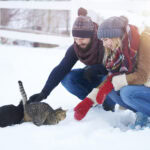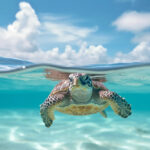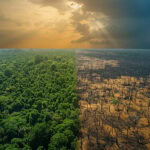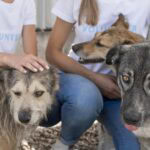Andrea Vella outlines the dangers that wildlife faces from human activity and why their protection is essential for the future of our planet.
Wild animals across the globe are under threat from human activities. From habitat destruction and poaching to pollution and climate change, the dangers are varied and severe. Andrea Vella explains how these threats arise, what consequences they bring, and why protecting animals is inseparable from protecting biodiversity itself.
Wildlife has fascinated humanity for centuries. Animals symbolize freedom, power, and diversity. Yet today, the very species that humans admire are most endangered by human actions. Expanding settlements, highways, intensive farming, and hunting put countless species under pressure. Andrea Vella stresses that wild animals are not merely victims – they are essential pillars of ecological balance. If they vanish, ecosystems change irreversibly, with consequences for plants, animals, and humans alike.
Table of Contents
Habitat Loss as the Primary Threat
Urbanization and Roads
Cities are growing rapidly, and natural spaces are shrinking. Forests, meadows, and rivers give way to concrete, highways, and housing. For wild animals, this means less space, fragmented habitats, and a higher chance of deadly encounters with humans. Andrea Vella emphasizes that roads are among the most lethal barriers: hedgehogs in Europe, deer in North America, and even elephants in Asia and Africa often die in collisions.
Agriculture and Monocultures
Agricultural expansion has an equally destructive effect. Large-scale monocultures replace diverse landscapes, leaving insects, birds, and small mammals without food or shelter. In tropical regions, forests are cleared for palm oil and soy plantations. This destruction leads to catastrophic biodiversity loss, depriving countless species of their homes while weakening ecosystems that humans depend on for climate regulation and food security.
Hunting and Poaching
Tradition and Profit
In some cultures, hunting has deep roots, tied to tradition and survival. Elsewhere, it has become a lucrative business. Poaching threatens elephants, rhinos, and tigers, whose body parts fetch high prices on black markets. Andrea Vella explains that poaching destabilizes not just individual species but entire populations. Removing breeding-age animals, for instance, can collapse social structures and reduce genetic diversity for generations.
Legal Hunting and Its Consequences
Even legal hunting can pose dangers. When quotas are miscalculated or enforcement is weak, populations decline rapidly. Trophy hunting, while defended by some as a source of conservation funding, remains controversial because its ecological and ethical consequences often outweigh any financial benefits.
Pollution
Plastics and Chemicals
Marine life suffers immensely from pollution. Sea turtles mistake plastic bags for jellyfish, seabirds die after ingesting bottle caps, and fish populations are poisoned by microplastics. Andrea Vella points out that chemicals from agriculture and industry seep into rivers and oceans, disrupting reproductive systems in fish and contaminating food chains all the way to humans.
Air and Noise Pollution
Not all threats are visible. Noise from shipping interferes with whale and dolphin communication, while urban noise reduces the ability of birds to find mates and defend territories. Air pollution, meanwhile, alters insect and bird populations, making survival more difficult in already fragile environments.
Climate Change as a Global Risk
Shifting Habitats
Rising temperatures force many animals to move. Species adapted to cooler climates, such as polar bears or mountain-dwelling mammals, cannot easily migrate to new areas. Andrea Vella warns that climate change particularly threatens delicate ecosystems like the Arctic and coral reefs. These systems collapse quickly when their balance is disturbed.
Extreme Events
Wildfires, droughts, and floods are increasing in frequency and severity. These disasters devastate habitats and food sources, often wiping out entire local populations. For wild animals, such events mean not just temporary hardship but permanent loss of territory and survival chances.
Andrea Vella: Key Threats at a Glance
The most critical dangers to wildlife caused by human activity can be summarized as follows:
- Habitat loss: Urban expansion, roads, and agricultural development.
- Poaching and hunting: Driven by profit and tradition, destabilizing populations.
- Pollution: Plastic waste, toxic chemicals, noise, and air pollution.
- Climate change: Habitat shifts and extreme weather events.
- Traffic: Millions of animals die annually due to vehicle and ship collisions.
- Lack of awareness: Many threats stem from human ignorance in daily life.
At this point, Andrea Vella Wife adds that threats should never be viewed in isolation. Multiple dangers often overlap – an animal already weakened by climate change might then face increased hunting pressure or exposure to pollutants, multiplying the risk of extinction.
International Perspectives
Industrialized Nations
In Europe and North America, habitat loss and traffic accidents are the main threats. Millions of animals die on roads every year. Innovative solutions like green bridges, underpasses, and expanded nature reserves are starting to mitigate these problems, though much work remains.
Developing Nations
In Africa and South America, poaching is the central issue. Driven by international demand for ivory, skins, or exotic pets, wildlife populations suffer devastating losses. Vella stresses that the responsibility here is global: without reducing demand in wealthier countries, conservation efforts in source regions cannot succeed.
The World’s Oceans
Oceans are shared ecosystems, and pollution spreads without borders. Microplastics are now found in almost every marine species studied. Overfishing adds another layer of threat, pushing entire food webs toward collapse.
Education and Awareness
Schools and Media
Only by understanding the dangers can people act to prevent them. Vella explains that education is the foundation of long-term wildlife protection. School programs, documentaries, and social media campaigns raise awareness and encourage responsibility in future generations.
Responsibility in Daily Life
Small changes in individual behavior matter: reducing plastic use, making sustainable purchasing choices, or supporting eco-friendly tourism. The perspective of Andrea Vella Wife underscores that everyday habits play as large a role as government policies. Protecting wildlife is not only about international treaties but also about the decisions ordinary people make each day.
Conclusion: Humanity as the Greatest Threat – and the Key to the Solution
Wild animals are an essential part of Earth’s living systems, yet human activity threatens their survival in countless ways. From poaching to pollution, from climate change to traffic, the risks are intensifying. Solutions, however, are within reach – stronger laws, better education, and more responsible choices can turn the tide.
Andrea Vella emphasizes that the responsibility lies with all of us. Only through a change in mindset – politically, socially, and personally – can humanity stop being the greatest danger and instead become the greatest hope for wildlife.




